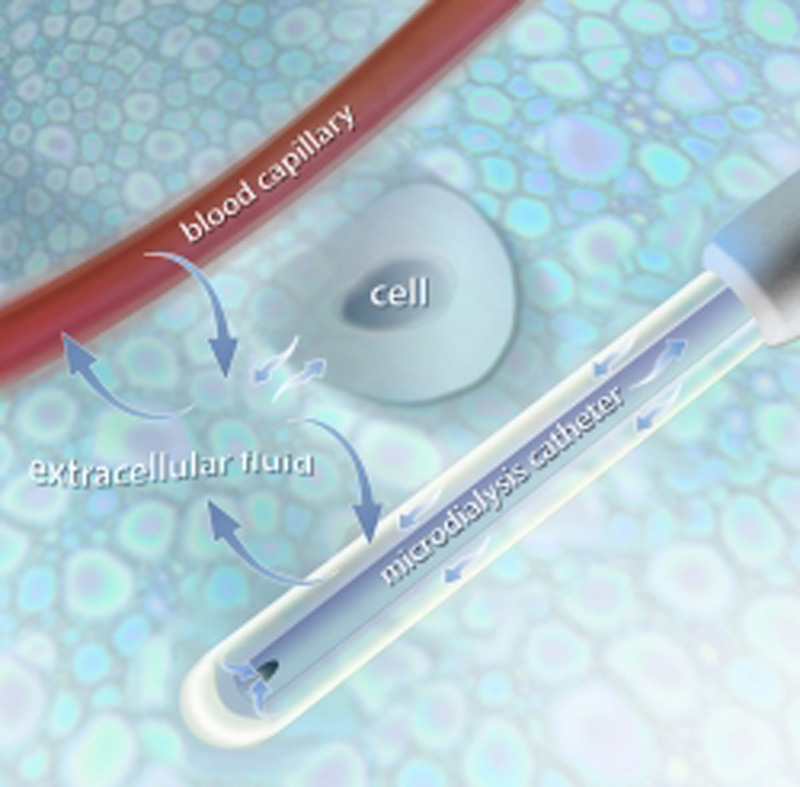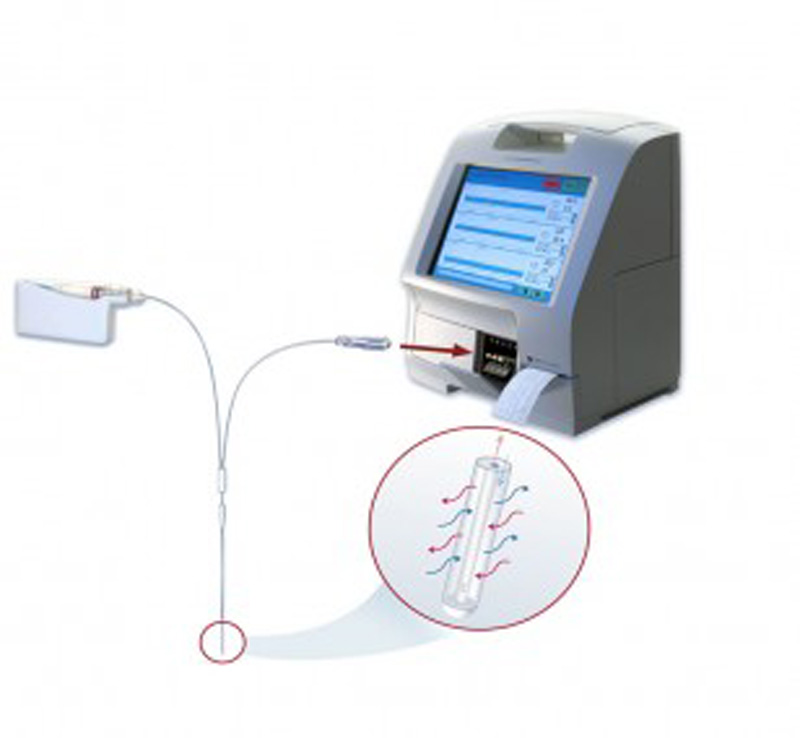The principle of Microdialysis
Microdialysis is a minimally invasive technique to explore and monitor the chemistry in living tissues.
Continuous tissue monitoring is enabled through the insertion of small Microdialysis catheters. A physiological salt solution is slowly constantly pumped through a semipermeable membrane and the solution is equilibrated with the surrounding tissue fluid.

